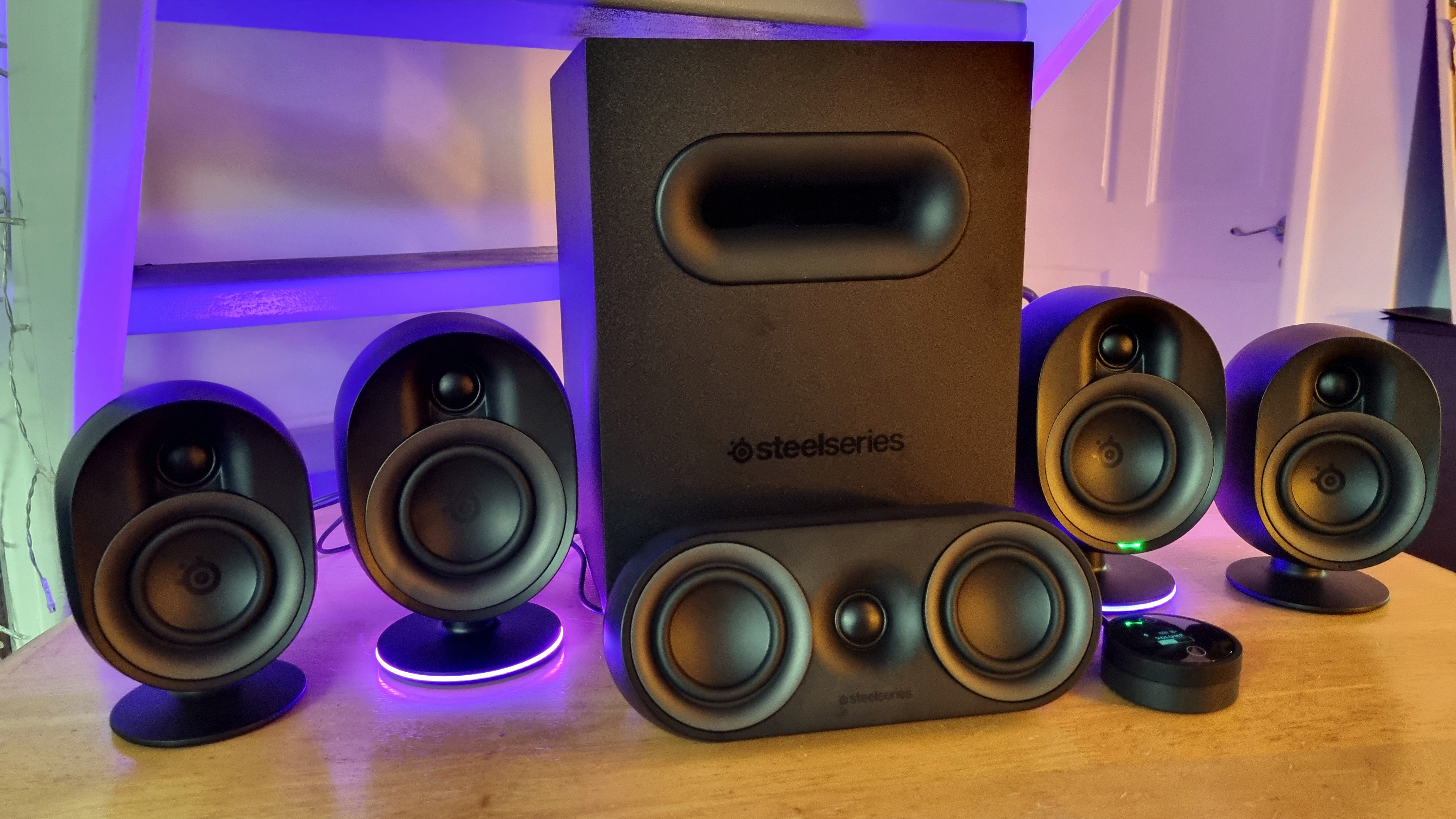Our Verdict
A great-looking and immersive set of 5.1 speakers, but a poorly implemented surround sound upmix setting—combined with a hefty price tag—sets them back.
For
- Detailed positional audio
- RGB lighting looks great
- Subwoofer is very powerful
Against
- 5.1 upmixing has music balance issues
- Rear units are prone to interference
- How much?
PC Gamer's got your back
What happened to 5.1 surround systems? Once all the rage for top-end gaming setups, these days you're much more likely to see a 2.1 system or set of regular old speakers attached to most gaming PCs. You could be forgiven for thinking 5.1 systems are purely for home cinema purposes, and for gaming they've simply become old hat.
SteelSeries, however, begs to differ. The SteelSeries Arena 9 is a fully-fledged 5.1 surround sound speaker system, complete with OLED-equipped hockey puck style control unit and some nifty, gamer-friendly RGB lighting. Yours for $550/£550.
Yep, I wouldn't blame you if you did a double take. I did. Over half a grand for a set of speakers might not be much in audiophile terms, but when it comes to gaming audio? That's pushing it. Especially when our current favorite set of gaming speakers, the Logitech G560, can be found for around $150–$200.
Still, you do get a lot for your money, at least out of the box. There's a substantial-looking central speaker, two sizable front left/front right units with LED light-up base rings and half-circle rear lighting, plus two slightly smaller rear satellite speakers. All of this connects into the back of a chunky subwoofer, with a slit-style front port and a serious-looking 6.5 inch downwards facing driver. Oh, and the hockey puck, along with a lot of cables and adapters to put it all together.
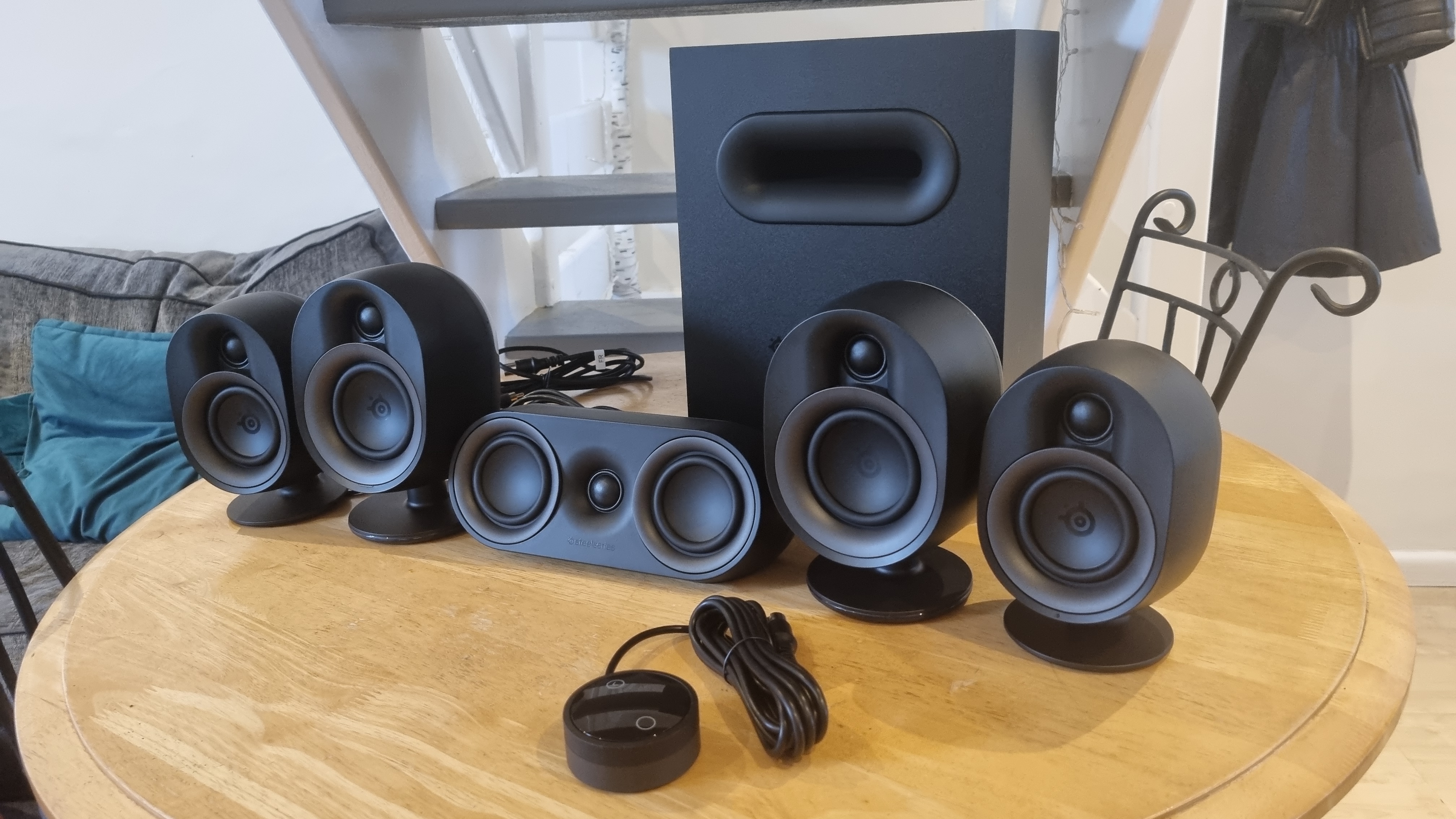
Connectivity: USB, Bluetooth, Optical, 3.5 mm aux
Speakers: Center speaker - 2 x 2.75 inch woofers, 1 x 0.75 inch tweeter / Front speakers - 2 x 3 inch woofers, 2 x 0.75 inch tweeter / Wireless rear speakers - 2 x 2.75 woofers, 2 x 0.75 inch tweeters/ Subwoofer - 6.5 inch down firing driver
Frequency response: 35—20,000Hz
Weight: 15 kg
Price: $550/£550
One great drawback of every 5.1 system is the sheer fiddly nature of the setup. The two satellites connect wirelessly for audio, but still require a cable linking the two together, along with a separate power adapter. The layout of my particular home rig (what with my desk pushed up against the wall and the whole rest of my front room behind me) isn't really designed for rear or side speaker setups.
Still, I set up one behind me on my bookcase to my right, and another on a fold out tray table to my left in roughly the right positions. They're mercifully light, at least, and feel good in the hands out of their packaging.
Once all the speakers are positioned and plugged into the rear of that substantial subwoofer, what you're left with is an impressive looking array of noise-makers. SteelSeries' Engine software allows a heavy amount of initial tweaking, and they also tie into other aspects of the suite like Prism for endless RGB adjustment and Sonar for parametric EQ fiddling. More on that later.
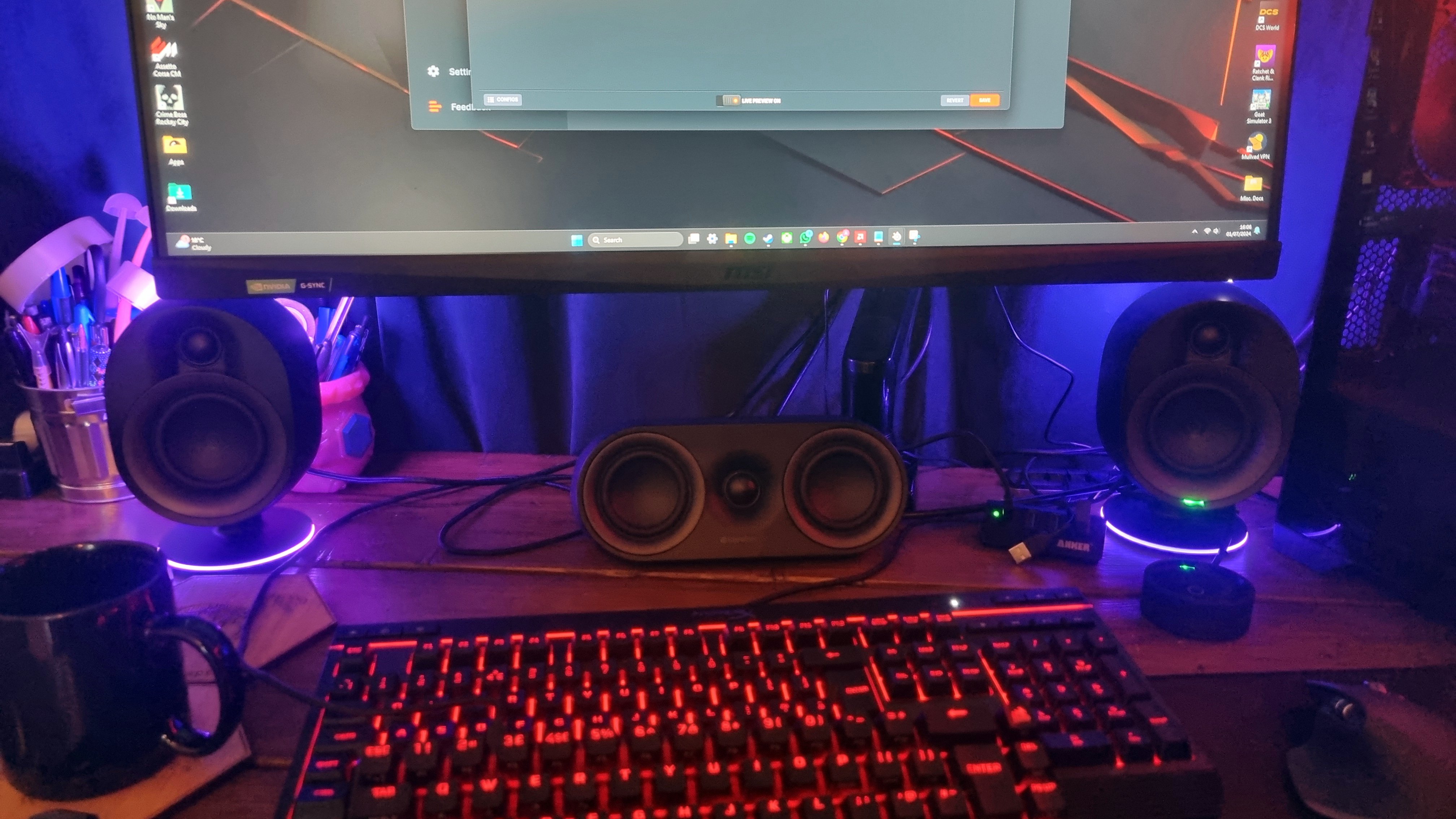
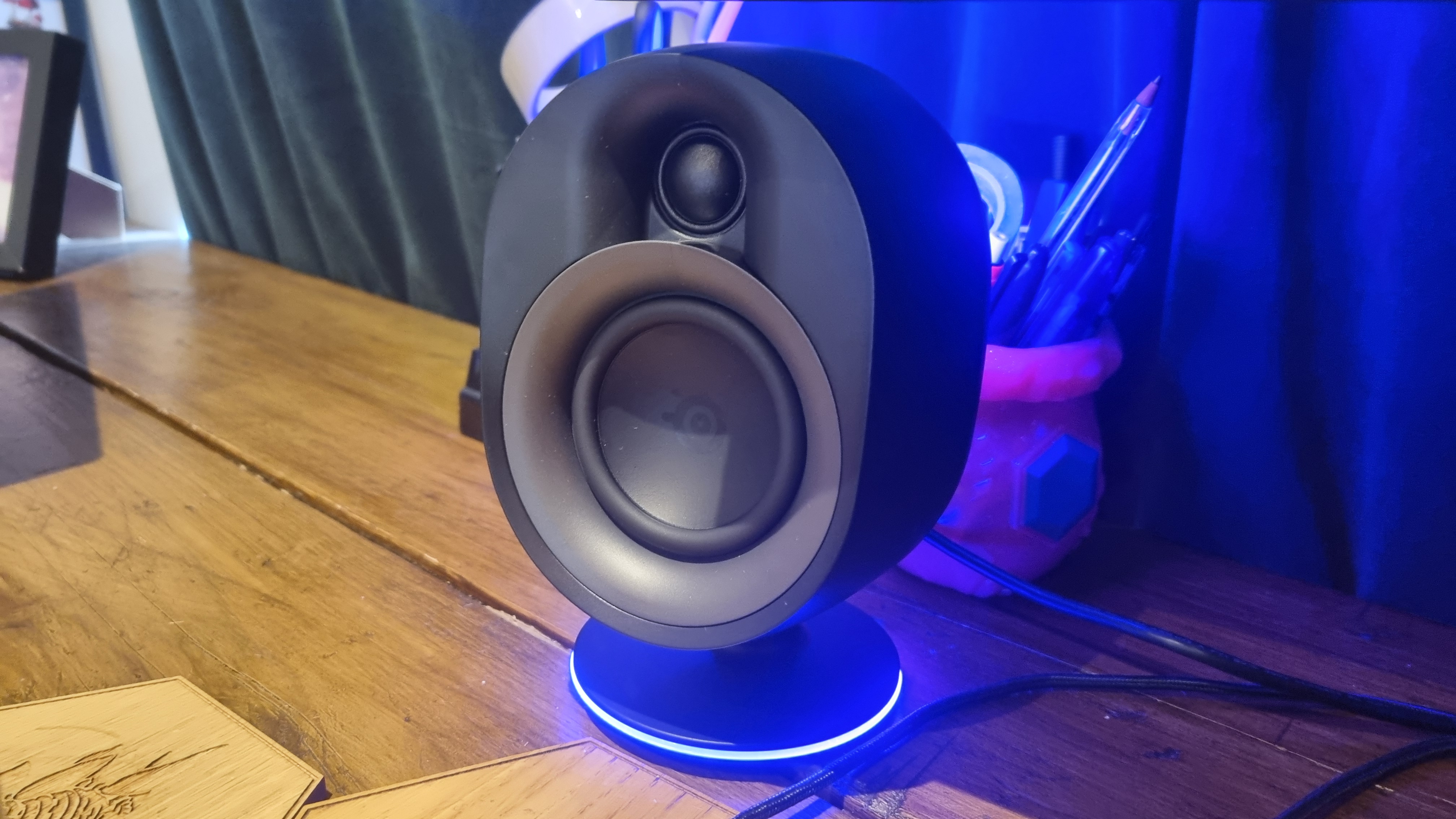
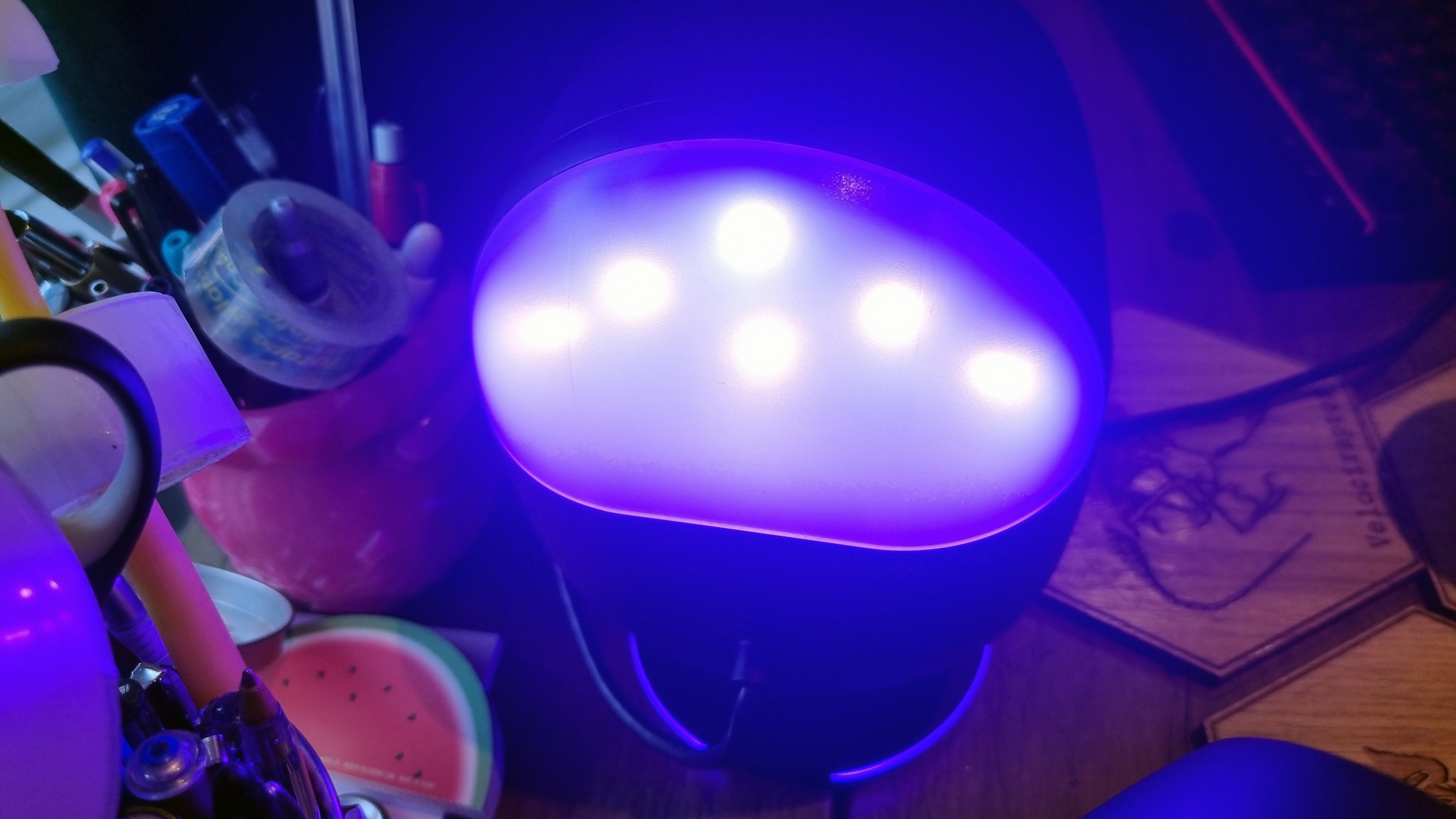
The two front speakers have RGB lighting around the edge of their respective bases, along with substantial rear lighting that's more than capable of acting as a screen backlight if your monitor hovers above them, as mine does. At full brightness they create quite the atmosphere, and definitely add a wow factor to proceedings.
Sound-wise, for gaming alone they're pretty great. That subwoofer is hugely powerful, so much so that I used the rear-mounted dial to take a touch off of the volume (a rarity, for a bass-head like me). Explosions punch the chest, soundtracks sweep, and bullets whizzing past in COD Warzone are enough to make you wince. If you're a multiplayer shooter fan, 5.1 audio like this makes a lot of sense in games that support it.
The level of detail on offer definitely ups the immersion in any game with serious positional audio atmospherics. Horror aficionados will really feel the benefit too, as there's nothing quite like jumping at a creeping zombie that you heard scratching the floorboards behind you.
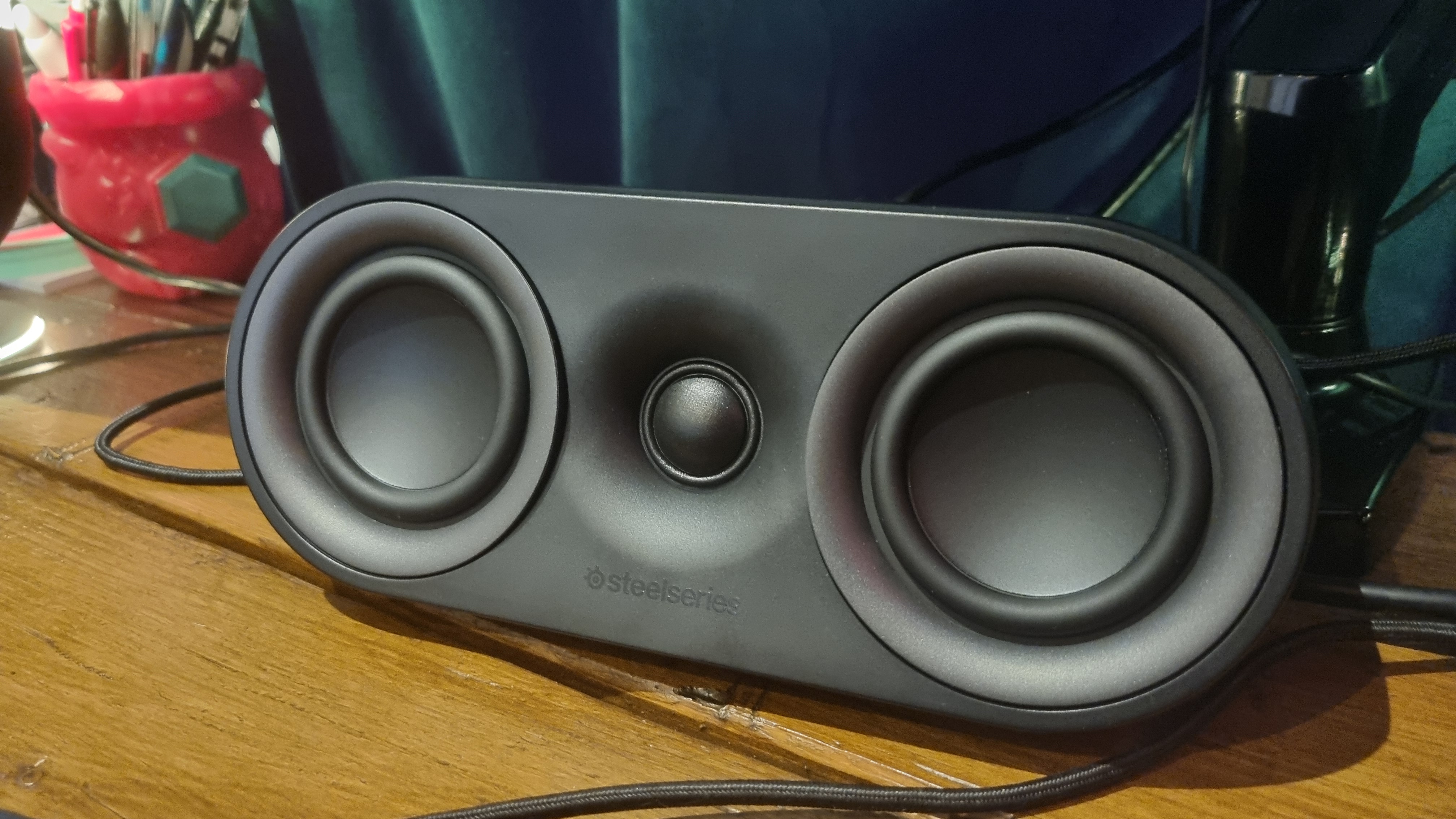
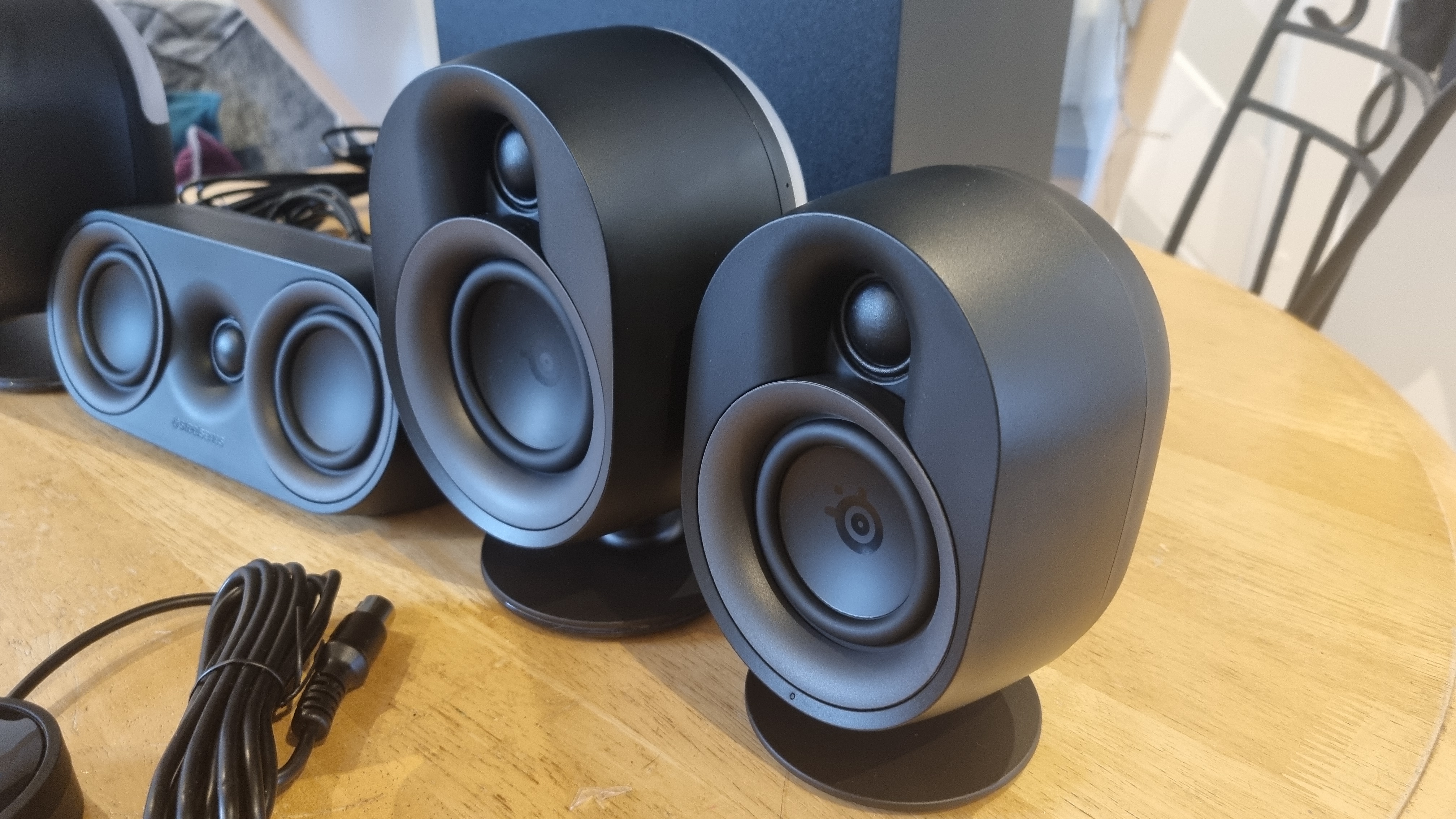
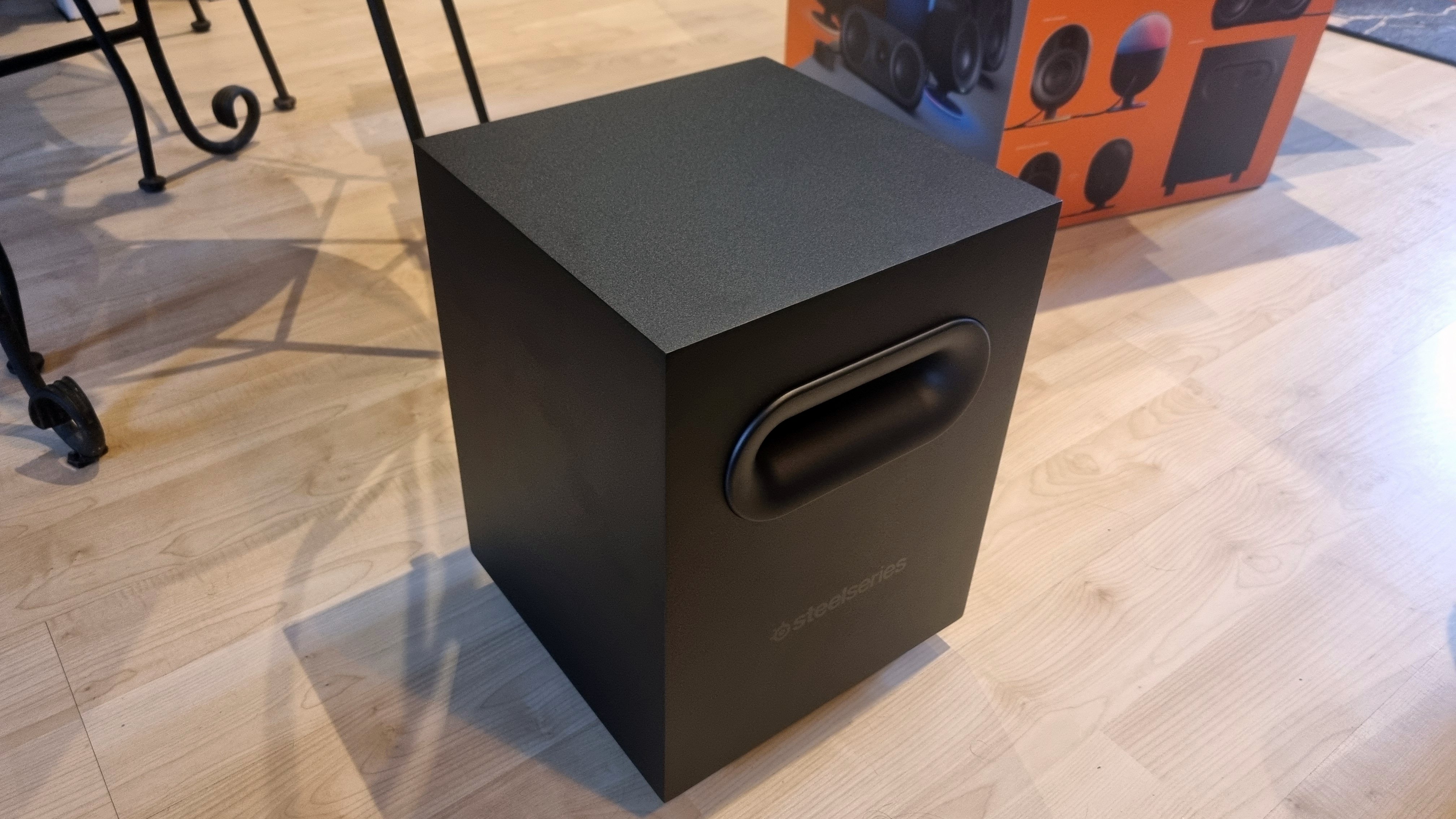
There's a lot to be said for good 5.1 audio implementation, and these units do a great job of delivering accurate positioning. For gaming audio? They're a lot of fun, and look good doing it, too.
Where these speakers fall down, however, is music listening. There's a 5.1 upmix setting to convert conventional stereo-mixed audio to the central and rear speakers, but I found the effect lacking.
Part of the problem is that tremendous subwoofer. So tremendous, in fact, that if you pull it out of the mix, the central speaker and satellite units reveal that they're really not doing much mid to lower-midrange work at all. Some, no doubt, but they're very treble-focussed, letting the subwoofer handle just about everything else.
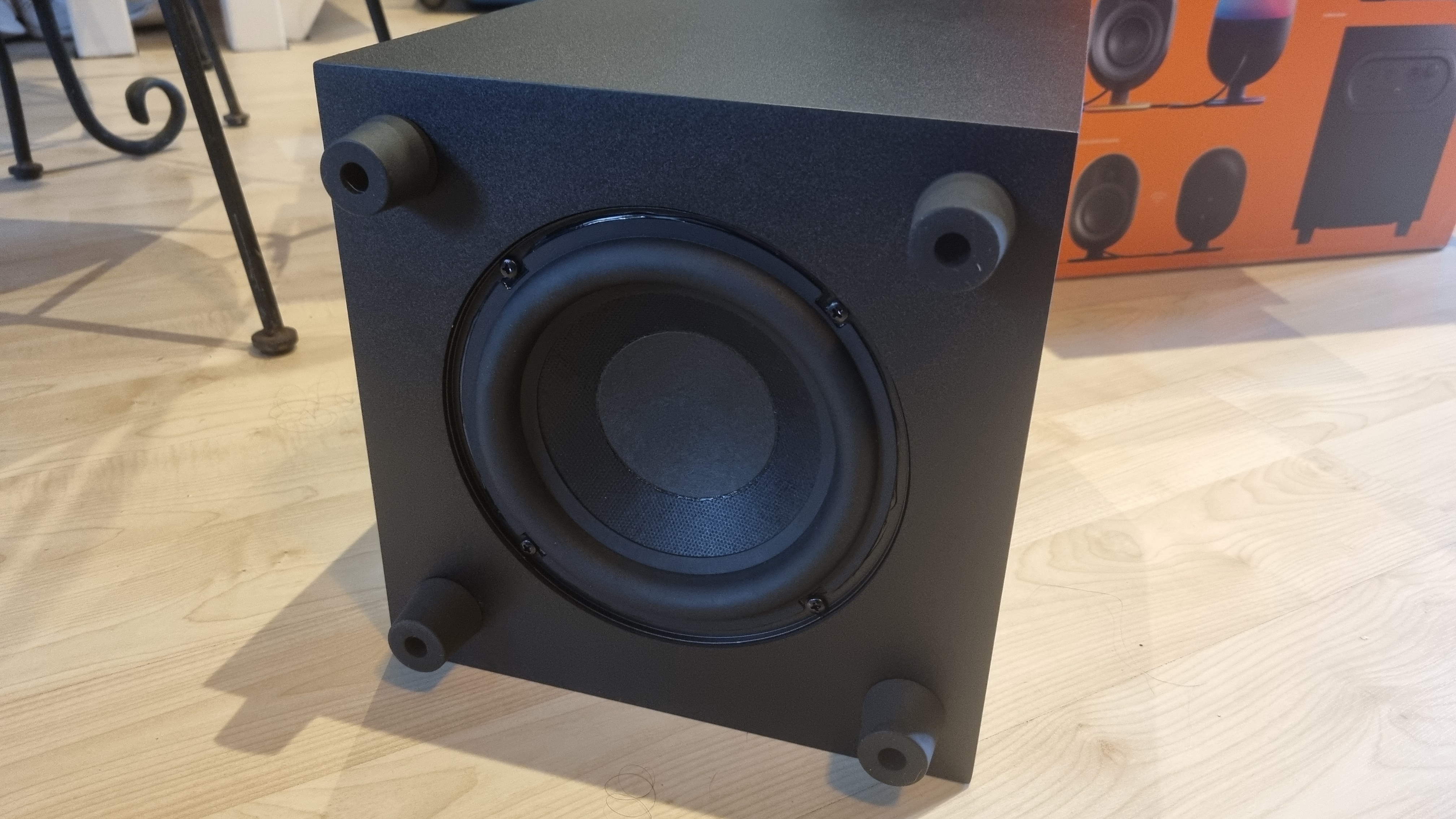
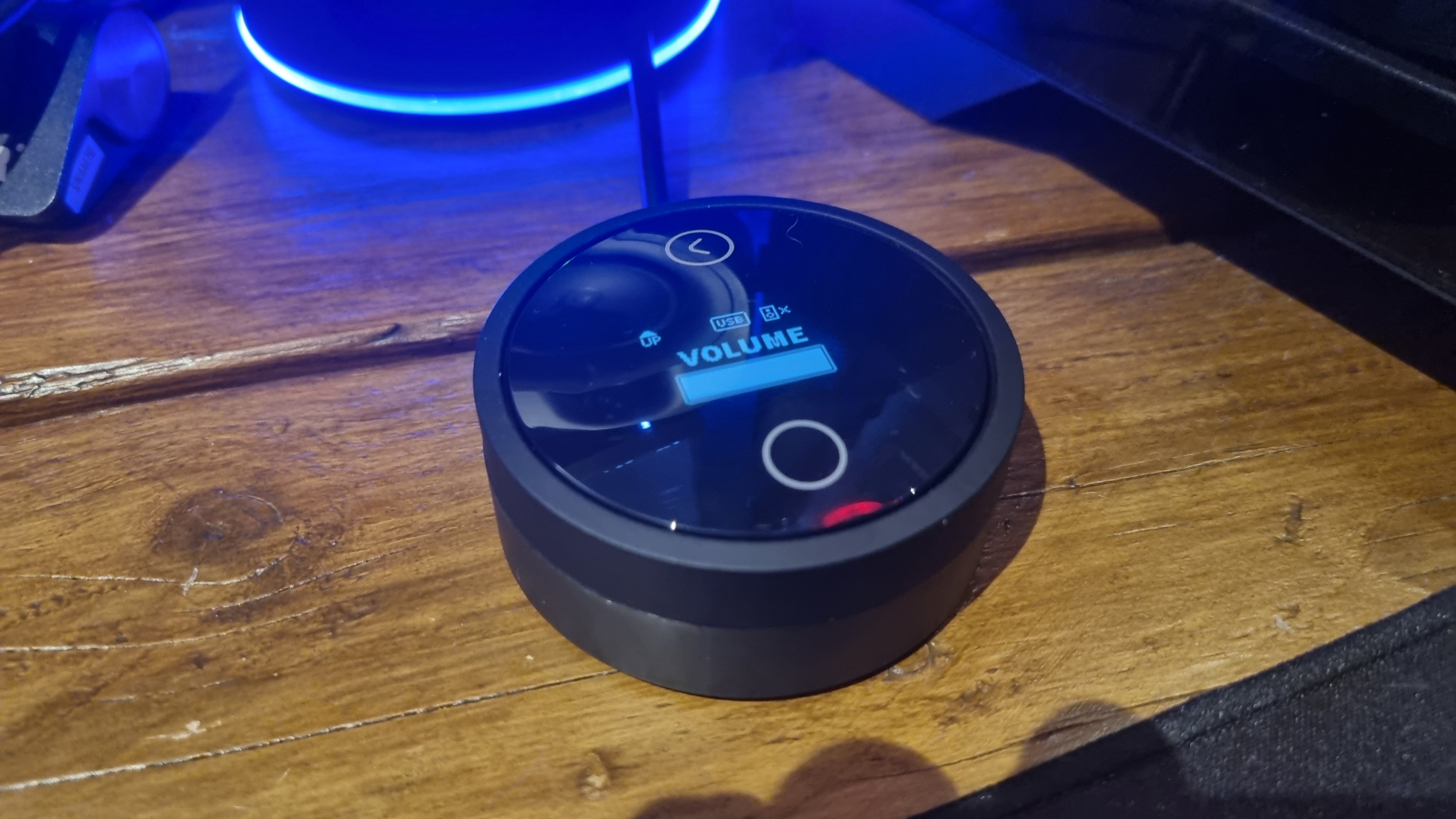
A go-to test for me with any set of speakers is Tool's The Pot, as it really does run the gamut of range, dynamics, and overall mix. While the drums pound, the bassline shakes and the vocals are crystal clear, the second the heavy guitars get going, the Arena 9's sound confused. A huge bassline and crunchy guitars? What goes where?
Well, there's some bassy weight present in those guitar riffs, so it must be the sub. But there's lots of mids too, so wind up the middle speaker.
I struggle with the idea of anyone needing to spend this much cash to achieve an effect that many headsets can deliver for less
The result? The bassline shudders as the subwoofer's driver tries to do multiple things at once, the central unit and surround speakers deliver a thin impression of a weighty rock riff, and the result sounds cluttered and oddly shaky.
It's like the subwoofer is looking at the other speakers with a quizzical expression. "Come on you lot, pull your weight. I can't do everything, you know."
No matter how I tweak Sonar's parametric EQ, I can never quite find a spot where the central speaker delivers some mid-range weight, instead relegating itself to the higher ranges. For 5.1 gaming, there's plenty of balance. For music? That upmix setting leaves a lot to be desired, and it makes for a frustrating listening experience.
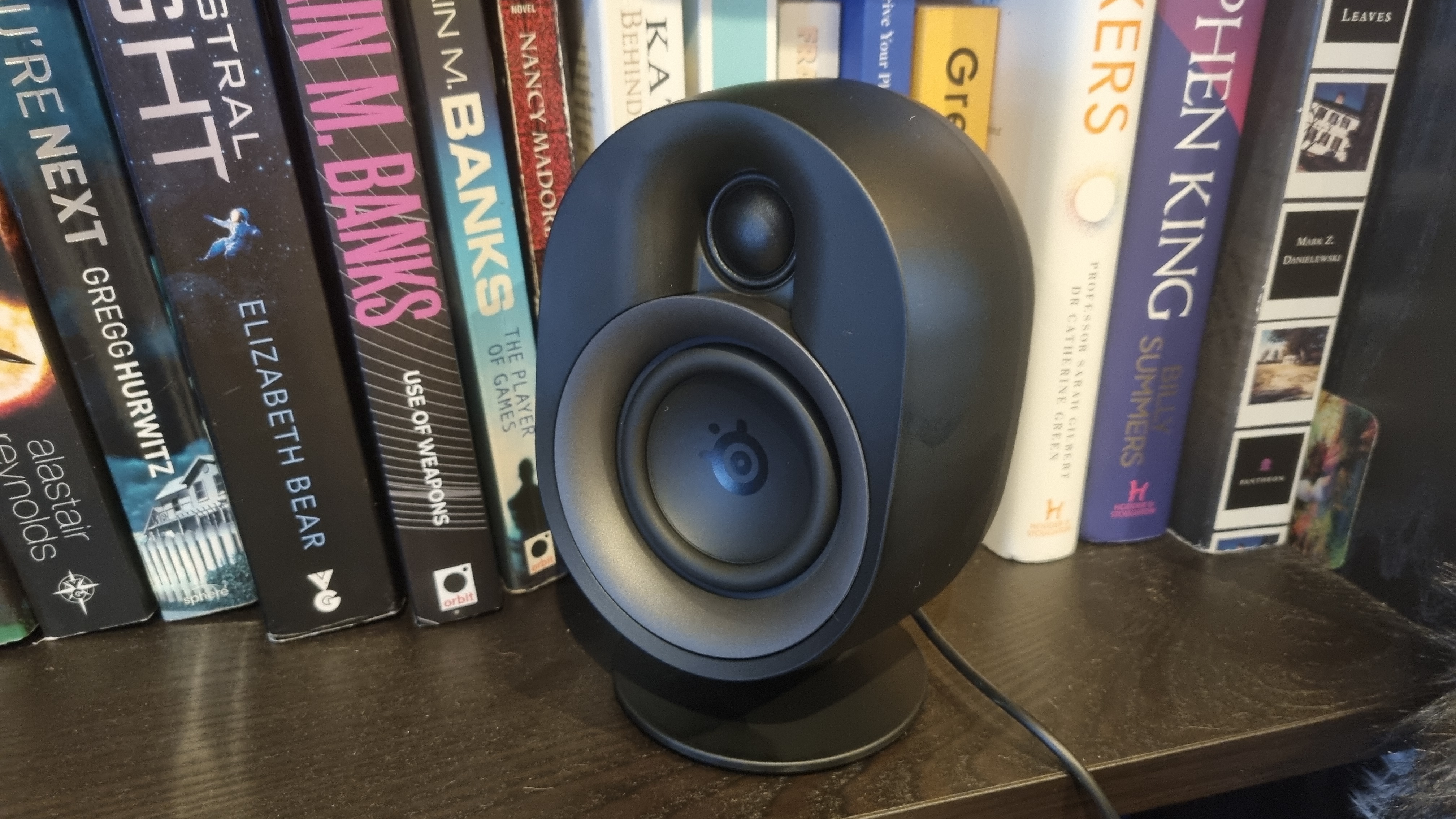
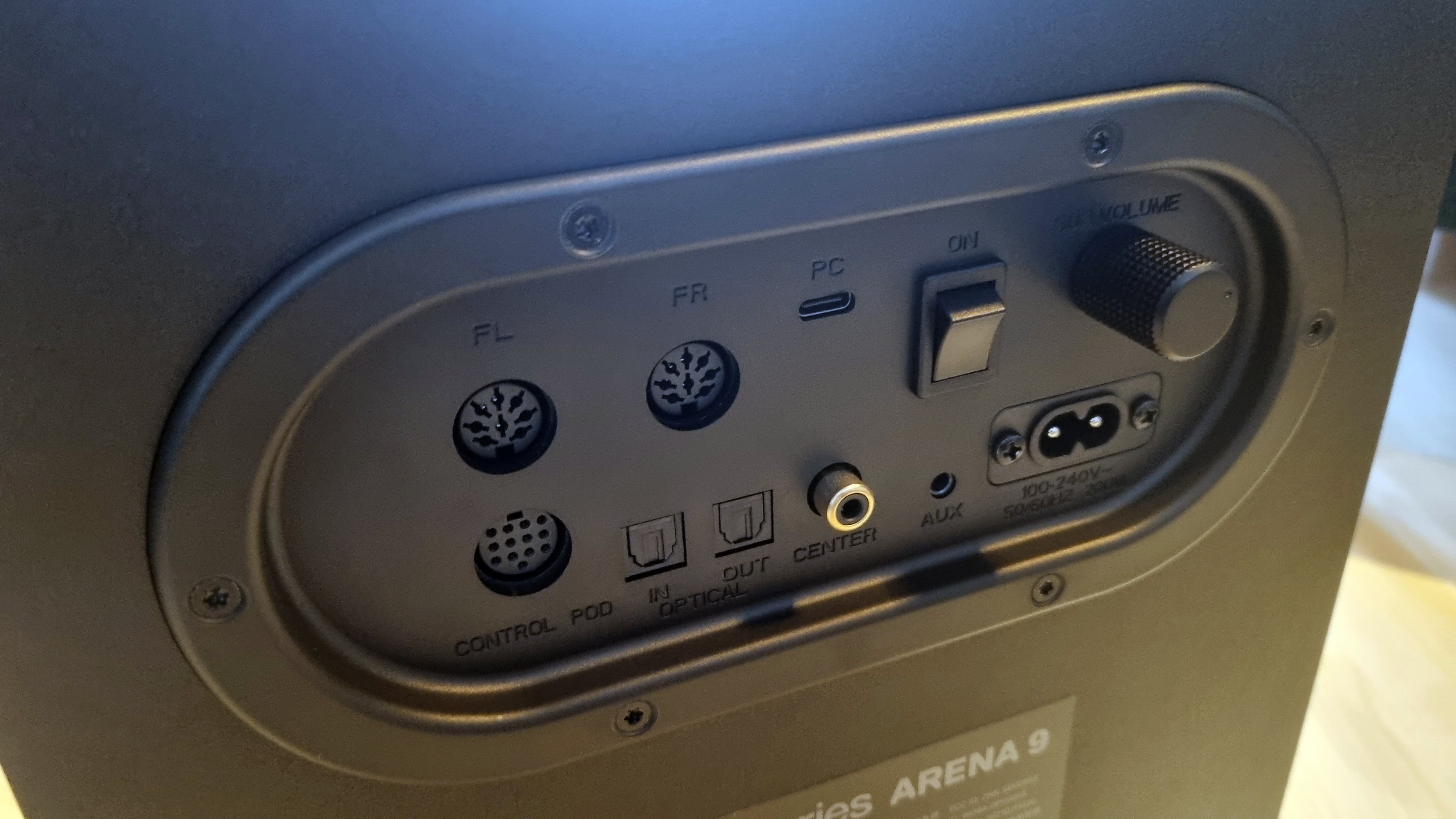
Also, the rear satellites have an odd background noise issue. Sometimes they're dead silent, other times they make a chittering sound between each other, back and forth. The wireless connection seems prone to interference at certain volumes when placed near other equipment. Not a huge issue, but I had to reconfigure some of my other gear to lessen the effect. Bit of a shame that, for the money.
Yep, there's that price again. While the RGB lighting is fun and the positional audio is great, I struggle with the idea of anyone needing to spend this much cash to achieve an effect that many headsets can deliver for a lot less.
✅ You want 5.1 theatrics: The Arena 9 delivers supremely accurate positional audio, and if you're a multiplayer shooter fan or a horror aficionado, you're likely to be impressed.
✅ You want powerful bass: The subwoofer here is genuinely great, adding a deep, weighty thump to proceedings that's more than capable of vibrating your fillings.
❌ You listen to a lot of stereo-mixed music: While there is a 5.1 upmix setting, it struggles to deliver a balanced stereo sound across the set.
❌ You're on a budget: At $550, these really aren't what you'd call an affordable option.
More than that, a $500+ set of speakers should really be great at everything. And while I've had a good time gaming on the Arena 9's, that mis-match between the power of the subwoofer and the light touch of the other units in upmix mode means I've been avoiding them as my go-to speakers overall.
So, what have I been using instead? Well, here's an admission: I broke out the Majority D80s, a two-speaker set that costs a mere £80 (US shipping is still a struggle at time of writing, unfortunately). Of course, you don't get all the positional audio theatrics out of two speakers, but they still do a great job of accurate audio, and are capable of kicking your chest pretty hard in the music department to boot.
Those stateside looking for a pair of speakers that can deliver the goods would do well to check out the Kanto Ora. Pricey they may be, but they really can deliver on all fronts, and you can hook in an optional subwoofer, too.
If you're dead set on the ultimate surround sound experience for gaming then the Arena 9's are worth a look, but for this sort of money, when it comes to music I was hoping they'd deliver something more balanced, more refined. More, well, expensive-sounding.
For gaming alone, these are powerful, accurate, and good-looking speakers. But light must come with shade, and while the 5.1 positioning is pin-point accurate and the room-shaking bass is immense, the roundness of the package, the be-all-and-end-all factor, is simply lacking. And for this price?
It really shouldn't be.
A great-looking and immersive set of 5.1 speakers, but a poorly implemented surround sound upmix setting—combined with a hefty price tag—sets them back.

Andy built his first gaming PC at the tender age of 12, when IDE cables were a thing and high resolution wasn't—and he hasn't stopped since. Now working as a hardware writer for PC Gamer, Andy's been jumping around the world attending product launches and trade shows, all the while reviewing every bit of PC hardware he can get his hands on. You name it, if it's interesting hardware he'll write words about it, with opinions and everything.
